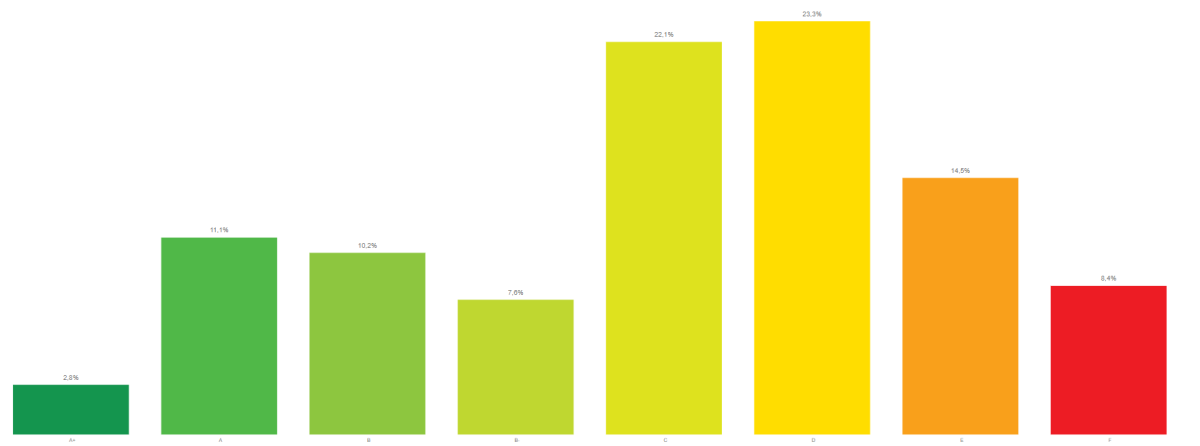
The energy efficiency of buildings is a topic that is increasingly on the agenda in Portugal. There are several ongoing government supports to make houses more efficient and now there is new pressure from the European Commission (EC), which stipulates new minimum standards of energy performance for buildings up to 2030. But what is the national picture in Portugal? The data shows us that, from 2014 until today, 1.56 million energy performance certificates have already been issued. And they also reveal that 2 out of 3 buildings are class 'C' or below.
This data is from the Building Certification System (SCE) and reveals that a total of 1.38 million home certificates have been issued. And, of these, only 2.8 per cent got the highest "A+" energy performance rating. Following this energy class is 'A', which covers 11.3 per cent of homes with a certificate. Class 'B' was attributed to 10.2% of the properties assessed.
The harsh truth is that the lowest energy class of all - class 'F' - covers 8.4% of Portuguese buildings. Properties with performance 'E' represent 14.5% of the total. And class 'D' represents around 23.3% and is even the energy class that includes the largest proportion of homes. Class 'C' was attributed to 22.1% of the energy certificates.
In this global analysis, Lisbon, Porto and Sintra are the three municipalities in the country that have issued the most energy performance certificates, reveal the data. Barrancos, Alvito and Porto Moniz have issued the fewest.
Of the total number of certificates issued in the last eight years, 181.359 have been issued for services buildings - around 12 per cent of the total. And it is clear that the majority of the certificates have ratings between 'B' and 'C'. Only 10.9% of these documents have the lowest classes of all - between 'D' and 'F'.

How have energy performance certificates evolved over 2020 and 2021?
The energy performance certificate is an essential document when selling or renting a house and to access public support. In 2021 alone, 202,364 new certificates were registered in the energy certification system, a 2% over 2020, but a 4.6% decrease when compared to 2019 - which was, in fact, the best year ever in emissions.
Last year, the higher energy classes 'stole' ground from the lower ones. Some 5.8% of certificates achieved 'A+' class. And 16.5% of properties were assigned a class A. And fewer than six in ten buildings received a class 'C' or lower in 2021.
In 2021, the highest number of certificates were issued in the municipality of Lisbon (16,118), followed by Porto (8,898) and Vila nova de Gaia (6,724). Barrancos, Mesão Frio and Alvito are at the bottom of the table.
And as far as this year is concerned: in the first days of the 2022, over 3,000 energy certificates have already been issued, according to data released the week of the tenth of January. And of these, more than 65% correspond to energy class 'C' or lower.
